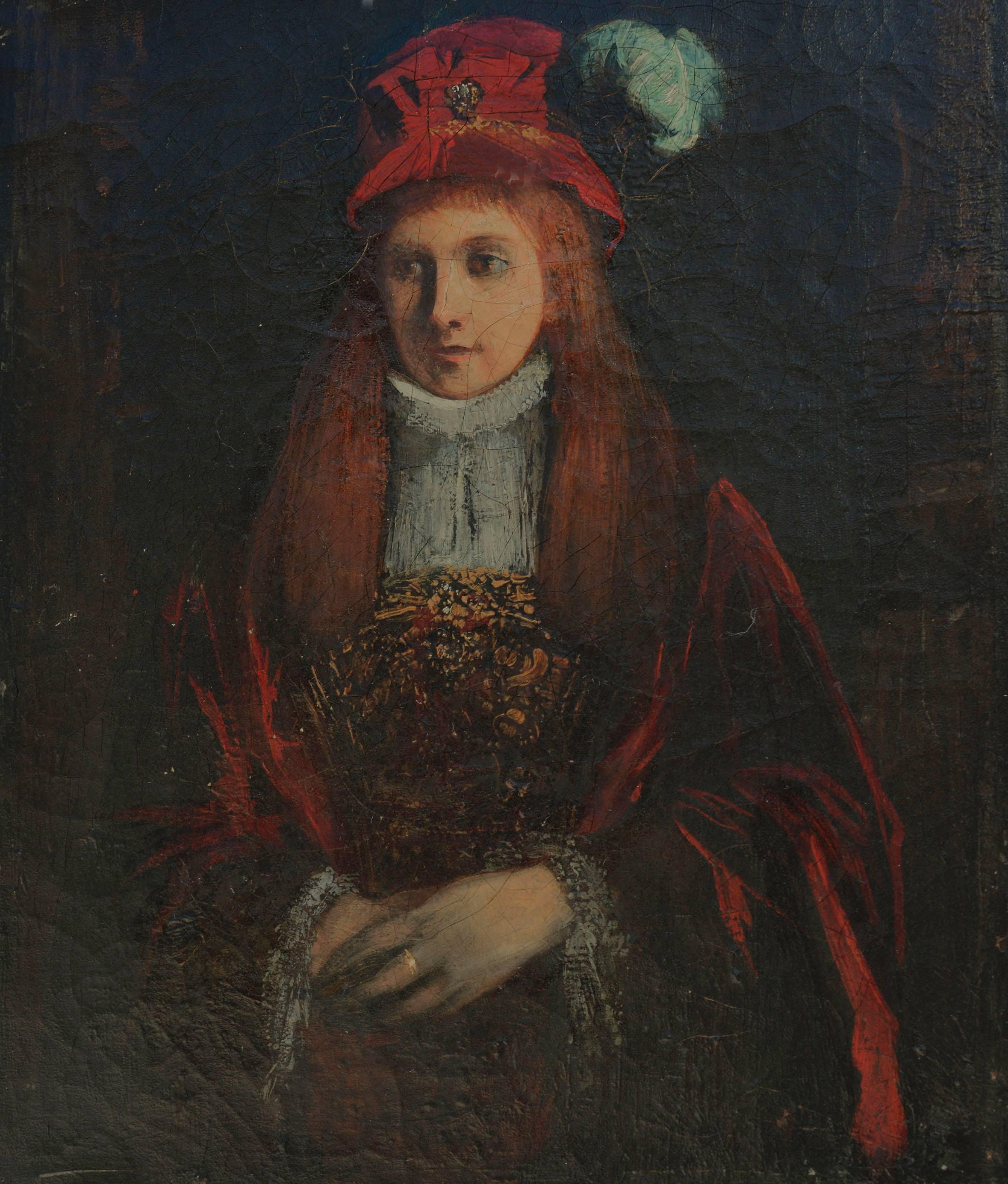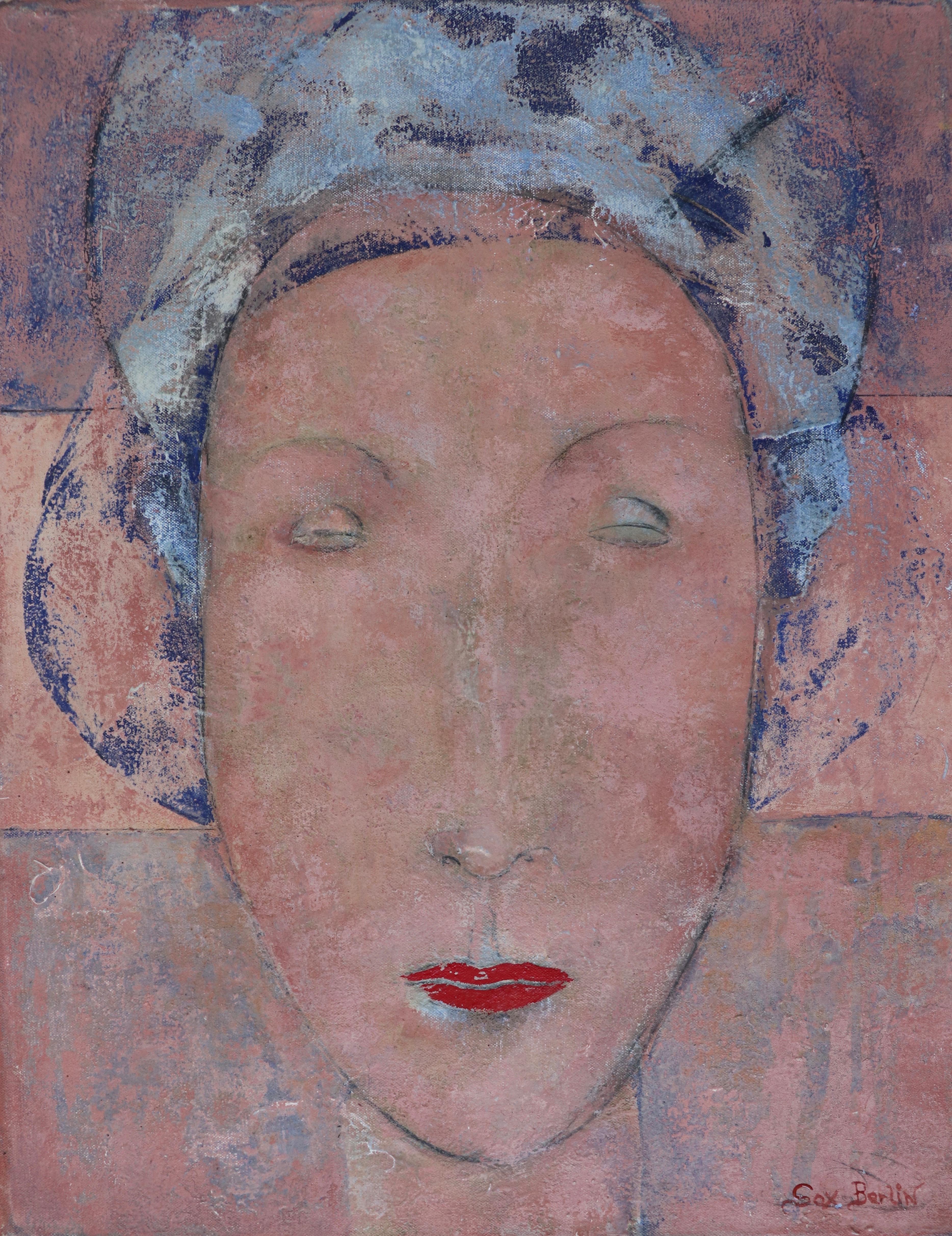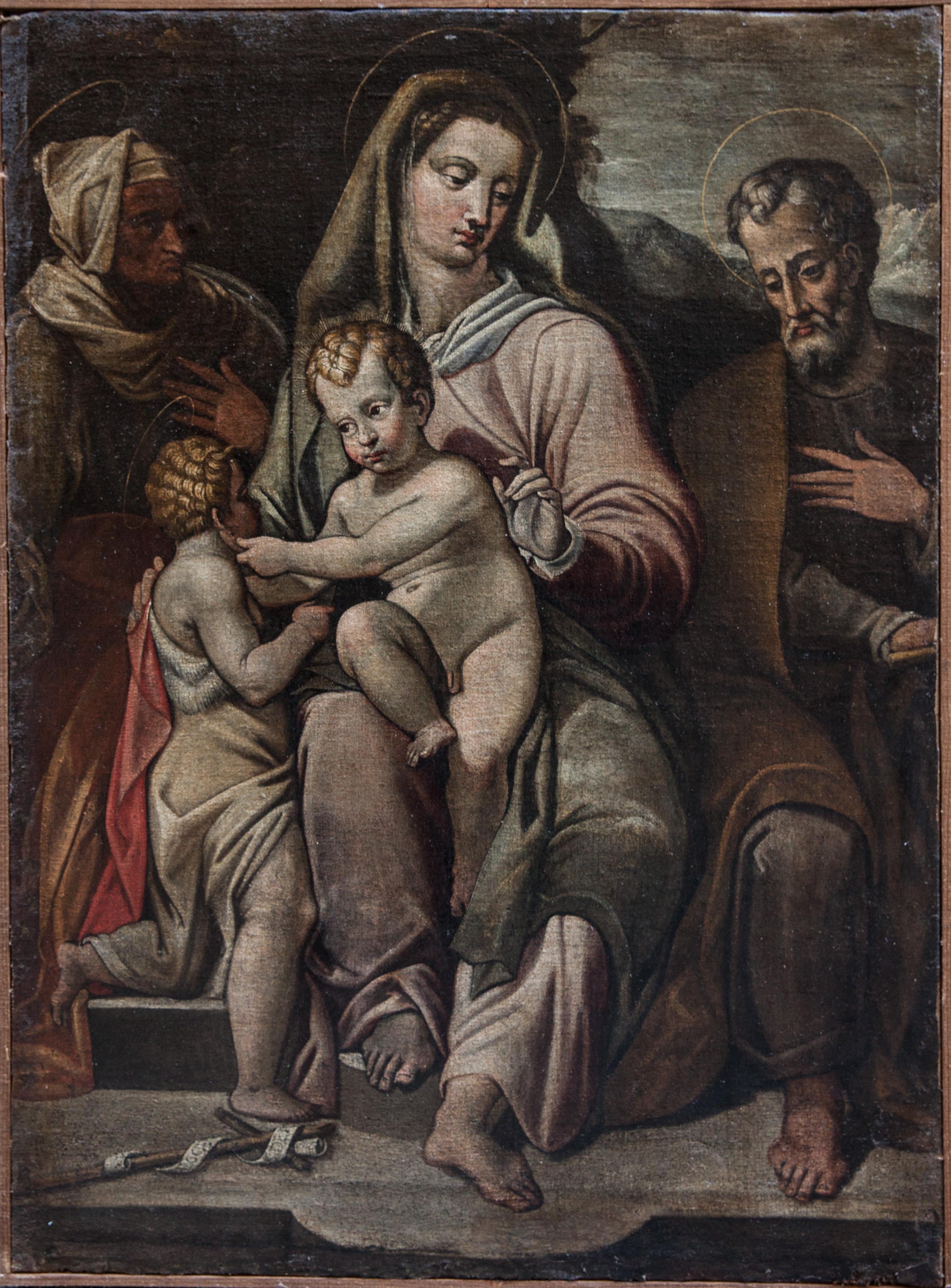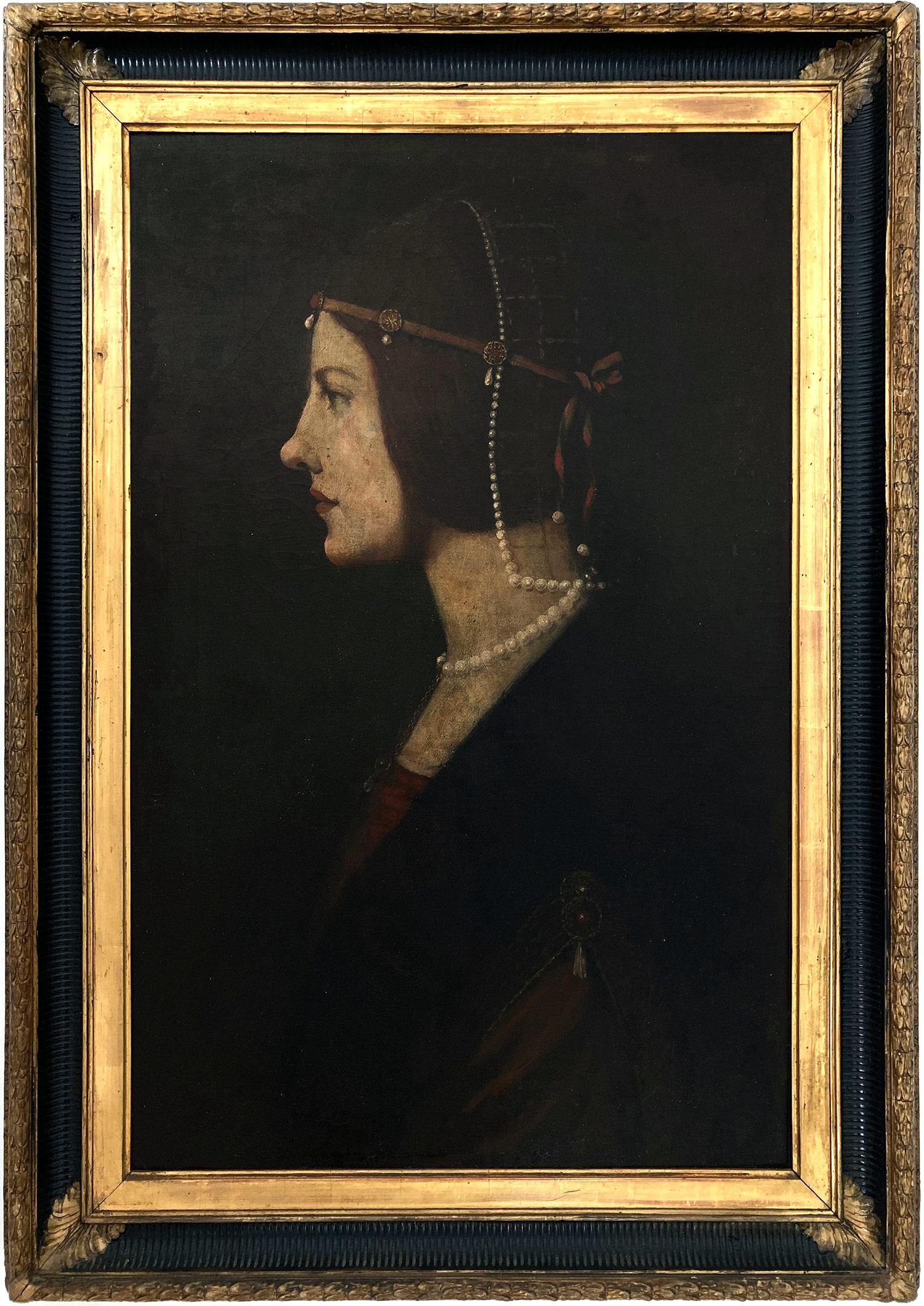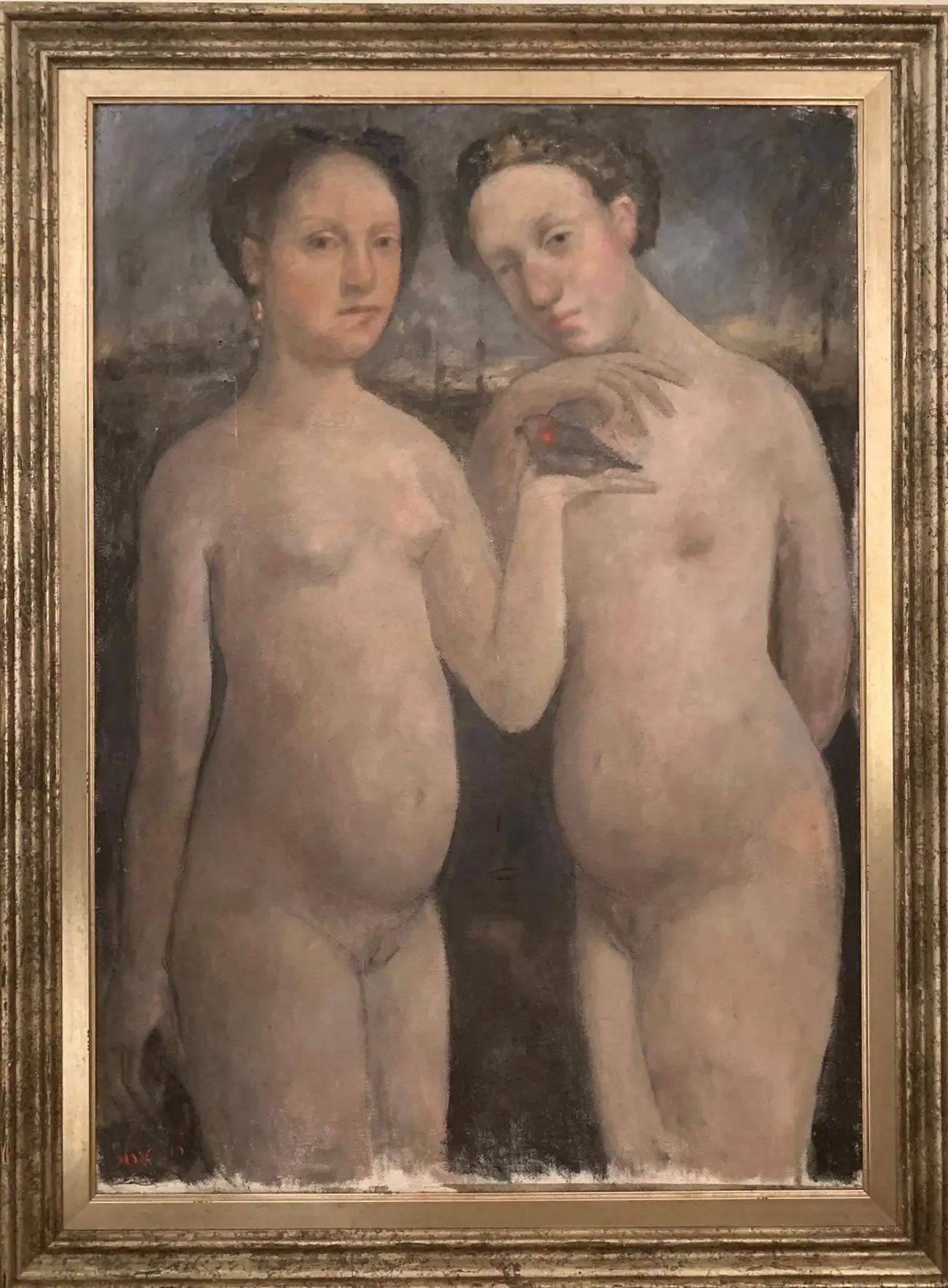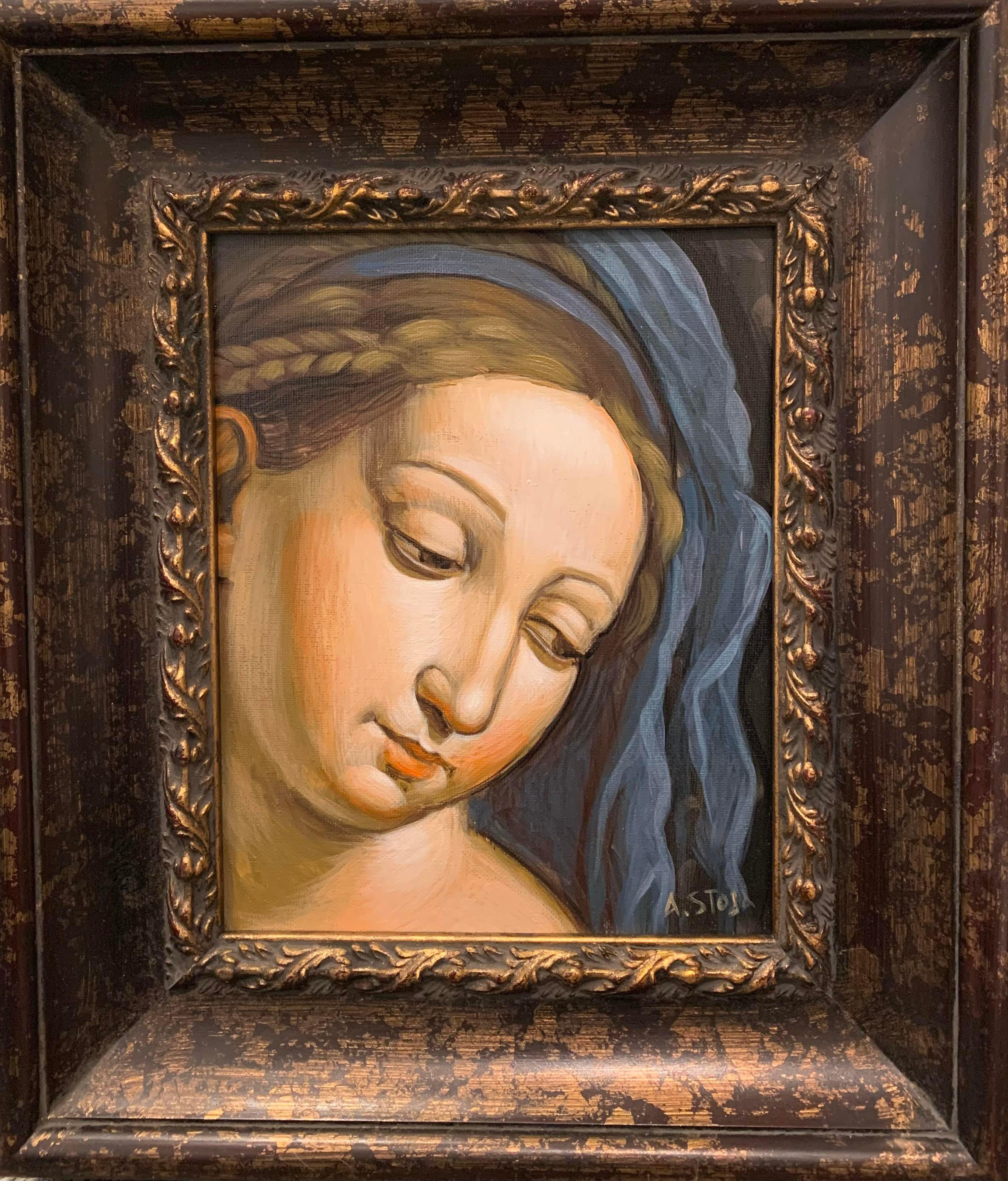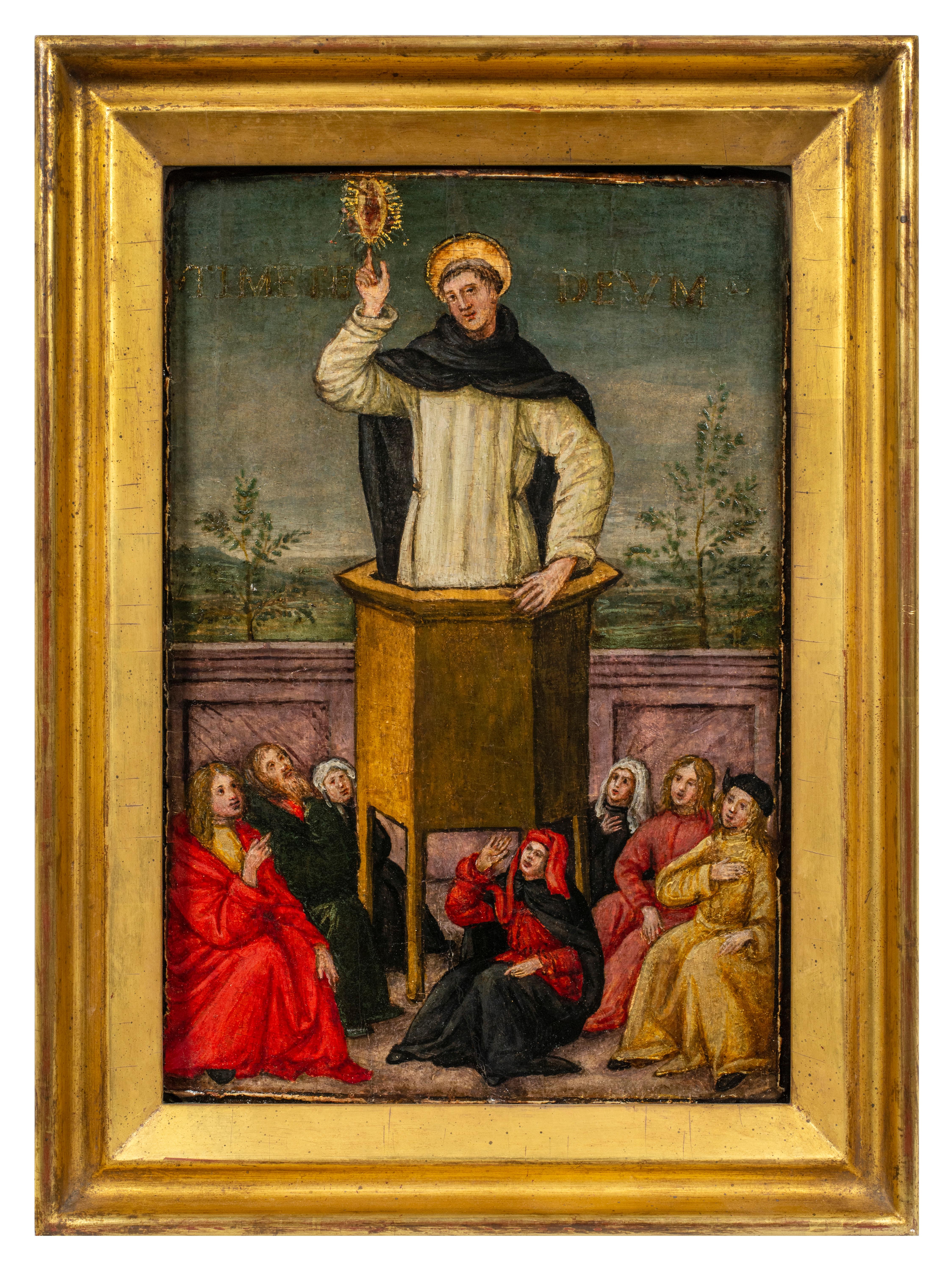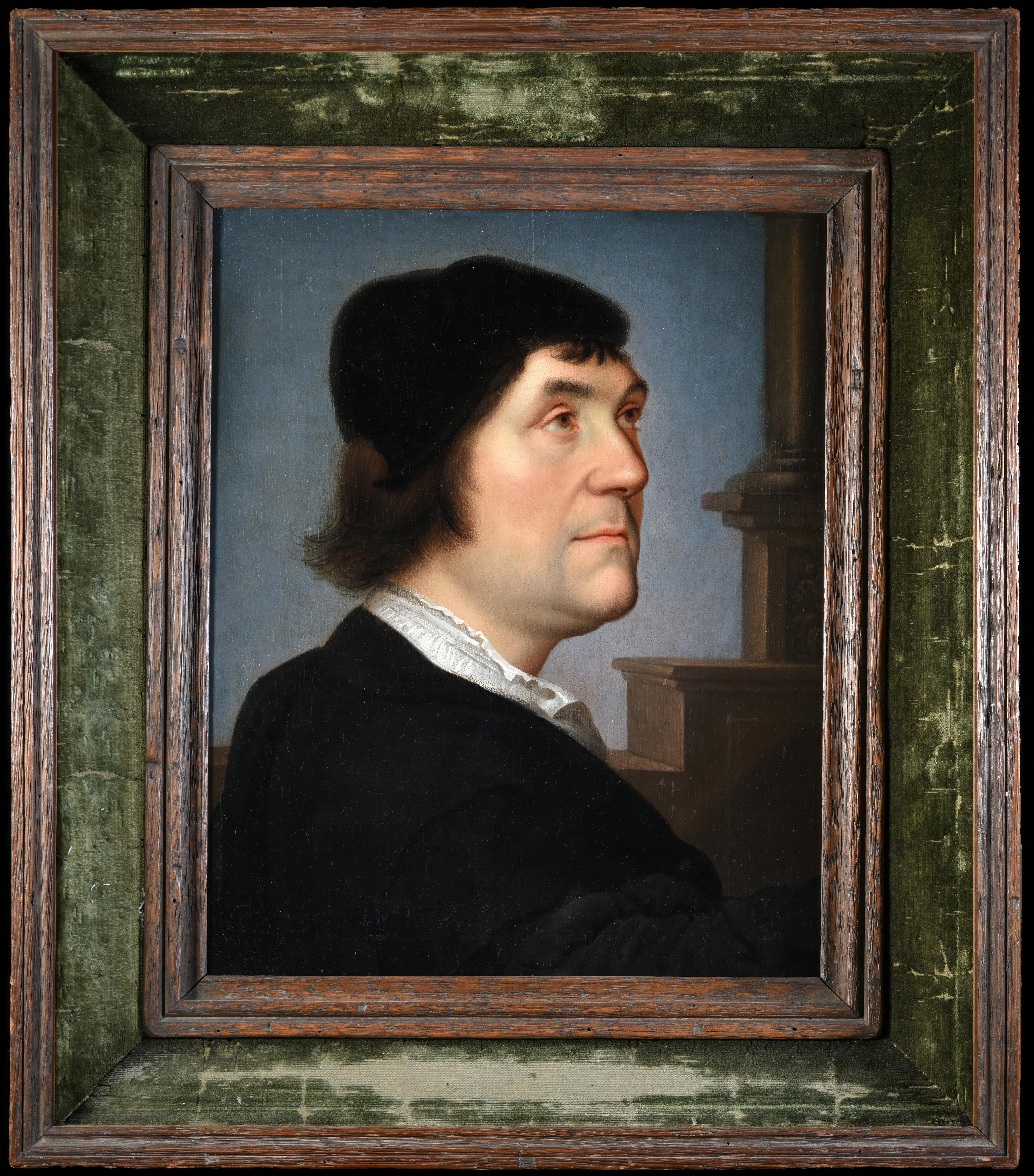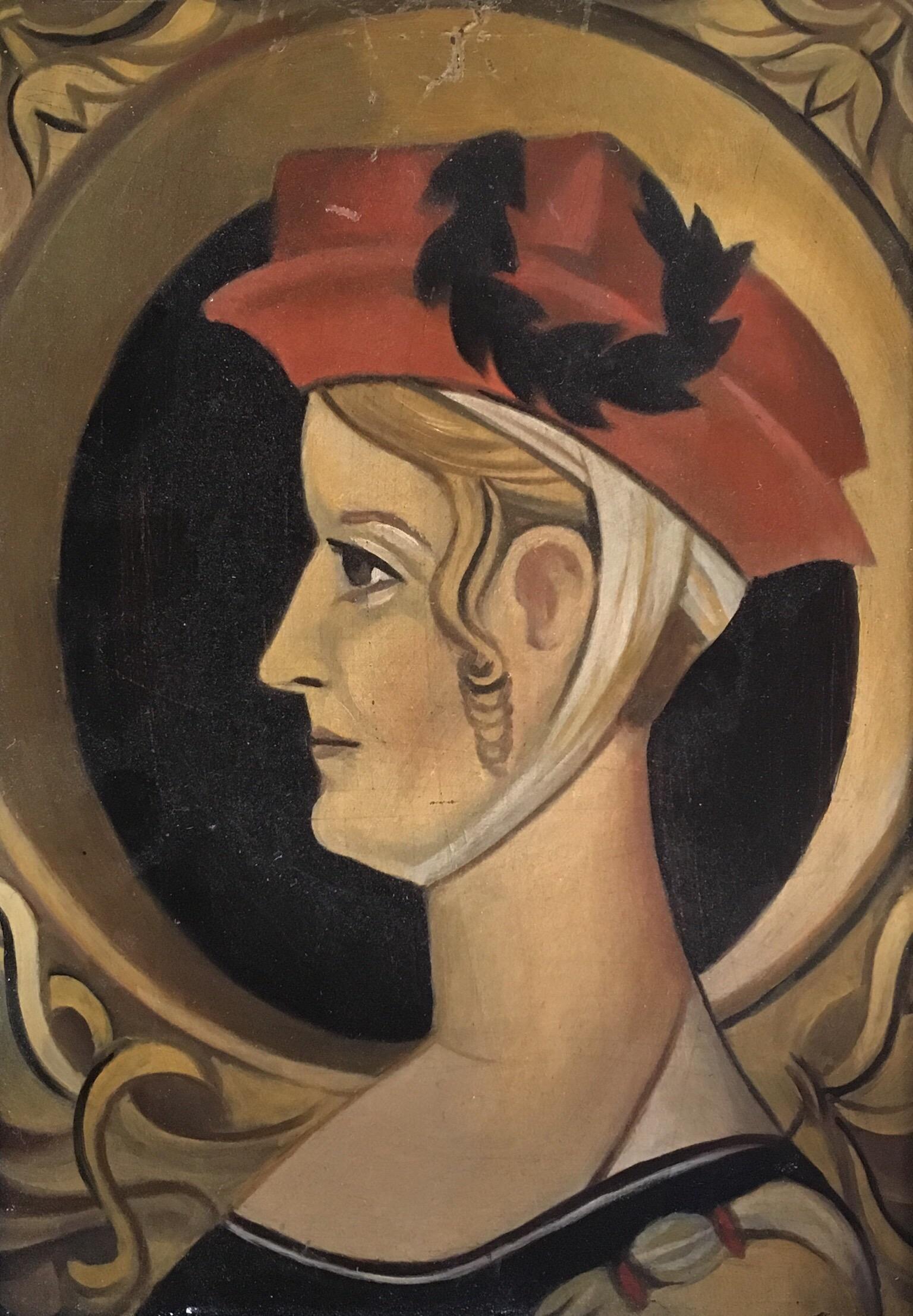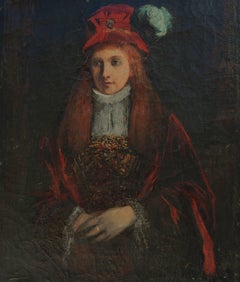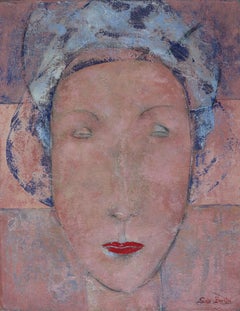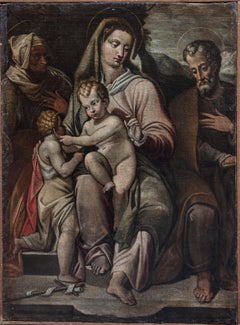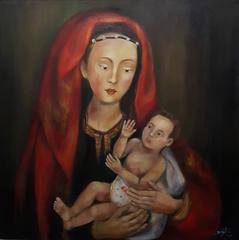
The Road to Greatness is Easier
View Similar Items
1 of 4
Moreen AustriaThe Road to Greatness is Easier2016
2016
About the Item
- Creator:Moreen Austria (Filipino)
- Creation Year:2016
- Dimensions:Height: 36 in (91.44 cm)Width: 36 in (91.44 cm)
- Medium:
- Movement & Style:
- Period:
- Condition:
- Gallery Location:Singapore, SG
- Reference Number:1stDibs: LU42631452783
You May Also Like
- 19th Century Young Irish Woman with Feathered HatLocated in Soquel, CAMid 19th Century portrait of a young Irish woman in c. 1570s dress with ruffle. Painted in the style of William Merritt Chase. Unsigned and unframed.Category
Mid-19th Century Renaissance Portrait Paintings
MaterialsCanvas, Oil
$1,440 Sale Price20% Off - "Lady". Contemporary Figurative Oil PaintingBy Sax BerlinLocated in Brecon, PowysThis piece from Berlin's studio dates back to 2003 but has only now been released. She's an a la mode young woman from the halcyon days of the Belle Epoque; confident and bewitching ...Category
Early 2000s Renaissance Portrait Paintings
MaterialsMarble
- The Holy Family with saints Anne and Joseph. Tuscan school. Circa 1610.Located in Firenze, ITThe Holy family with St. Joseph and St. Anna. Tuscan school. Late mannerist period, Circa 1610. Oil on canvas. Size 102cm x 77cm Painting by an unknown Tuscan painter from the lat...Category
18th Century and Earlier Renaissance Figurative Paintings
MaterialsCanvas, Oil
- 'Reut' by Roni Taharlev - Nude Portrait of a Young Woman - Oil PaintingBy Roni TaharlevLocated in Carmel, CAIn "Untitled," a 20" x 20" oil on canvas, Roni Taharlev captures an intimate moment of introspection. The painting's muted palette, with soft earth tones against a subdued backdrop, ...Category
2010s Renaissance Nude Paintings
MaterialsCanvas, Oil
$9,600 Sale Price20% OffFree Shipping - Copy of "Portrait of Beatrice dʼEste" by Leonardo da Vinci created 15th CenturyLocated in New York, NYA masterful copy by an unknown artist, after the portrait of "Beatrice d'Este" by Leonardo Da Vinci also known as ‘Portrait of a Lady’ or ‘La Dama con la reticella di perle (The Lady With a Pearl Hairnet)’. The original work originally created in the 15th Century is currently on display in the Pinacoteca Ambrosiana Museum of Milan. Beatrice d'Este was the Duchess of Bari/Milan and was believed to be one of the most attractive princesses of the Renaissance. Her impeccable style won her many admirers throughout Italy and France, and she became a trendsetter of the highest order. This copy of the original painting, is an oil on canvas done in the 18th Century, and in this exquisite portrait, the artist has masterfully depicted the fine details with draped hair, pearls, royal dress, ornate headgear and sumptuous jewelry in front of a dark background. Once again, capturing the imagination with another enigmatic smile. It comes housed in an elegant period giltwood frame with ebonized trims and ready to be displayed with hanging wire on verso. Art measures 28 x 18 inches Frame measures 34.5 x 24.5 inches There is much debate and controversy over who actually painted the "Beatrice d'Este" was it Leonardo da Vinci (1452–1519), or Giovanni Ambrogio de Predis (1455–1508). So we may never know who executed the original portrait which hangs in the museum, but that need not deter from an appreciation of its singularity. Following the portraiture convention established by painters of the Quattrocentro, the artist has chosen to portray his sitter in profile. In doing so, he magnificently captures the essence of his sitter, a girl on the threshold of womanhood. Bedecked in the adornments—silk, velvet, pearls and embroidery (brocade) crafted of spun gold threads—afforded her by birthright and marriage, Beatrice looks forward in noble serenity. And at the same time her profile with its upturned nose and slight smile betrays an innocence that must have been the basis of the oft-repeated epithet: la più zentil donna in Italia” (“the sweetest lady in Italy”). It is believed the lady is Beatrice d'Este (1475-1497), duchess of Bari and later of Milan, the wife of Ludovico Sforza (known as "il Moro"). One of the most beautiful princesses of the Italian Renaissance, she was known for her good taste in fashion. Beatrice was a member of the Este-Sforza family, which joined by marriage two of the oldest reigning and already powerful houses in Italy. The house of Este, which held court in Ferrara, traced its lineage to the 11th century Dukes of Saxony and Bavaria. Beatriceʼs father, Ercole I ruled the Ferrara commune for 34 years, catapulting the city-state (and the Estes with it) to an unmatched level of economic prosperity and cultural prominence. The family was renowned for its love of letters and patronage of the arts. The first time Leonardo da Vinci’s name resounded in the Ambrosiana, it was through the pen of its founder, Cardinal Federico Borromeo, who attributed this little panel to the great Master, describing it as “A portrait of a Duchess of Milan, by the hand of Leonardo”. Following the Cardinal’s statement, the portrait was for long assumed to depict Beatrice d’Este, the wife of Ludovico il Moro. However, scholars have recently been more cautious and vague in their statements, with regard to both the artist (anonymous Lombard or Emilian...Category
18th Century Northern Renaissance Portrait Paintings
MaterialsOil, Canvas
- ‘Two Women & Bird’ Figurative Female Models Oil On Canvas By Roni TaharlevBy Roni TaharlevLocated in Carmel, CA"Two Women & Bird," an evocative oil on board composition by contemporary artist Roni Taharlev, is a study in the nuanced interplay of form, shadow, and emotion. Sized at 40"x28", th...Category
21st Century and Contemporary Renaissance Portrait Paintings
MaterialsOil, Canvas
$20,000 Sale Price20% OffFree Shipping
Recently Viewed
View AllMore Ways To Browse
Renaissance Child Portrait
Renaissance Mother And Child
Portrait Collar
Attributed To Large Painting
Large 17th Century Oil Painting
19 Century Portrait Oil
Oil Portrait Sisters
Chinese Portrait Oil Painting
Impressionist Portrait Of A Woman Oil
19th American Portrait Oil
Full Length Portrait
King Charles Painting
19th Century American Oil Portraits
Portrait Woman Realist
19th Century American Portraits Oil Paintings
Peter Lely
Portrait Painting Young Boy
Portrait Earl Of
